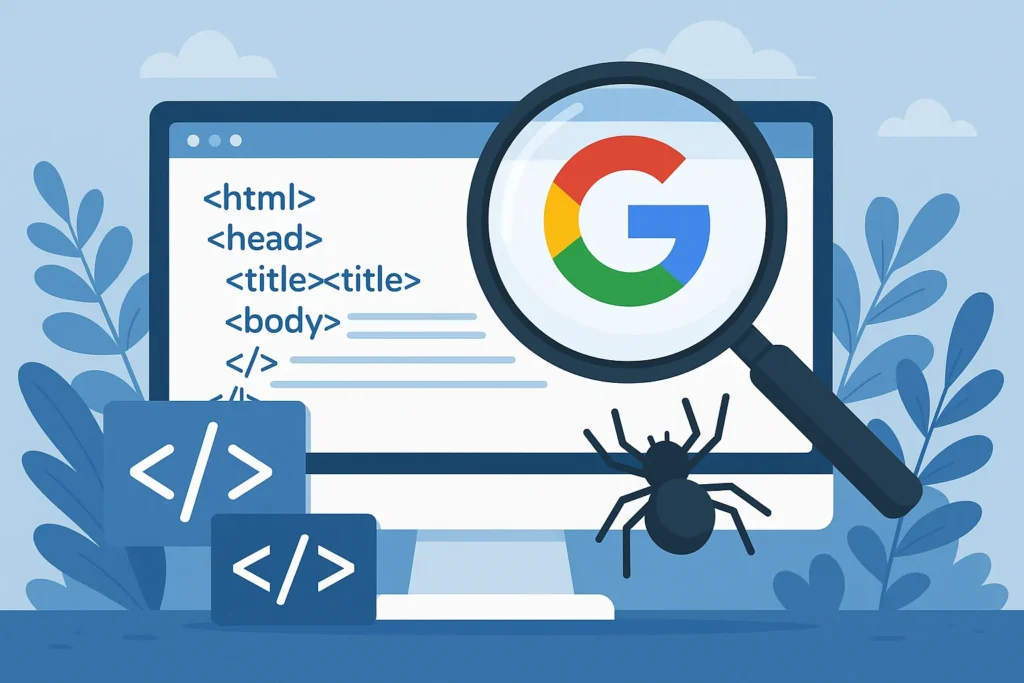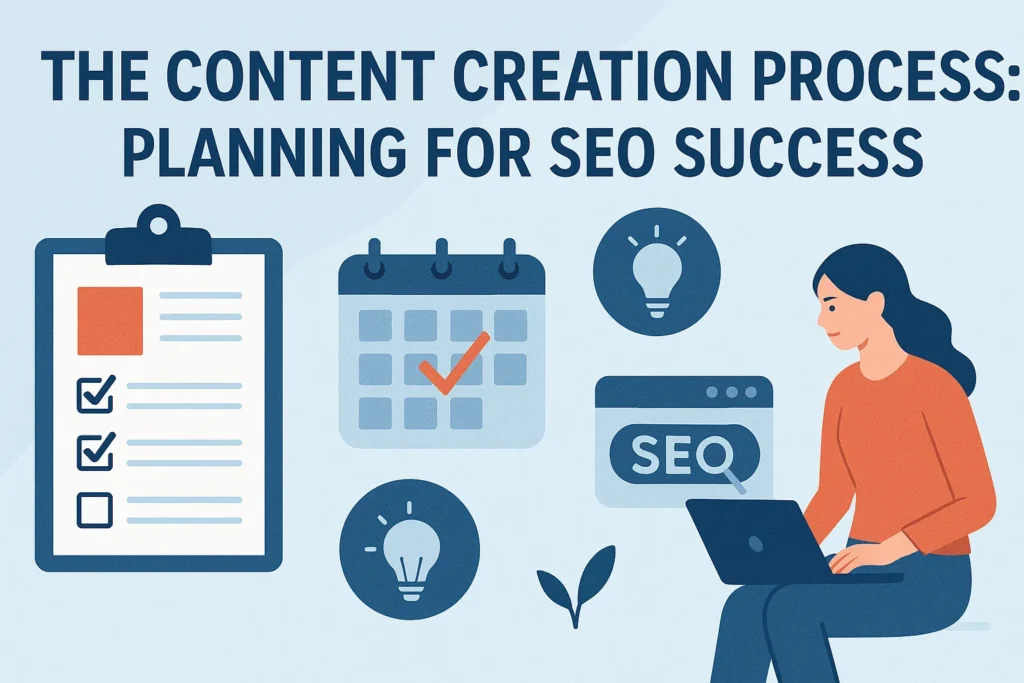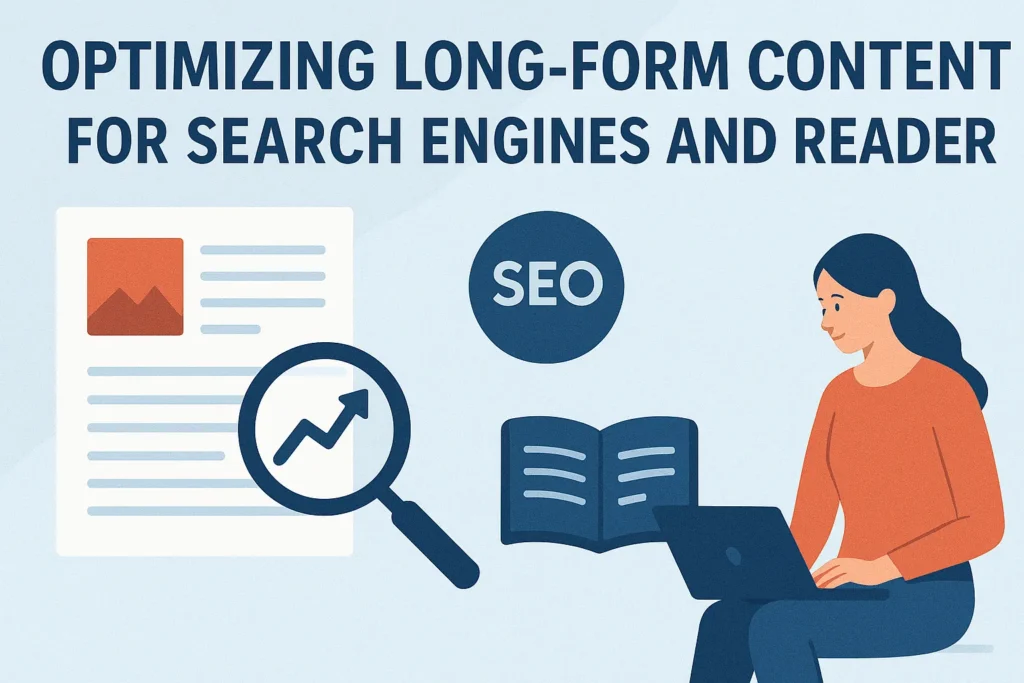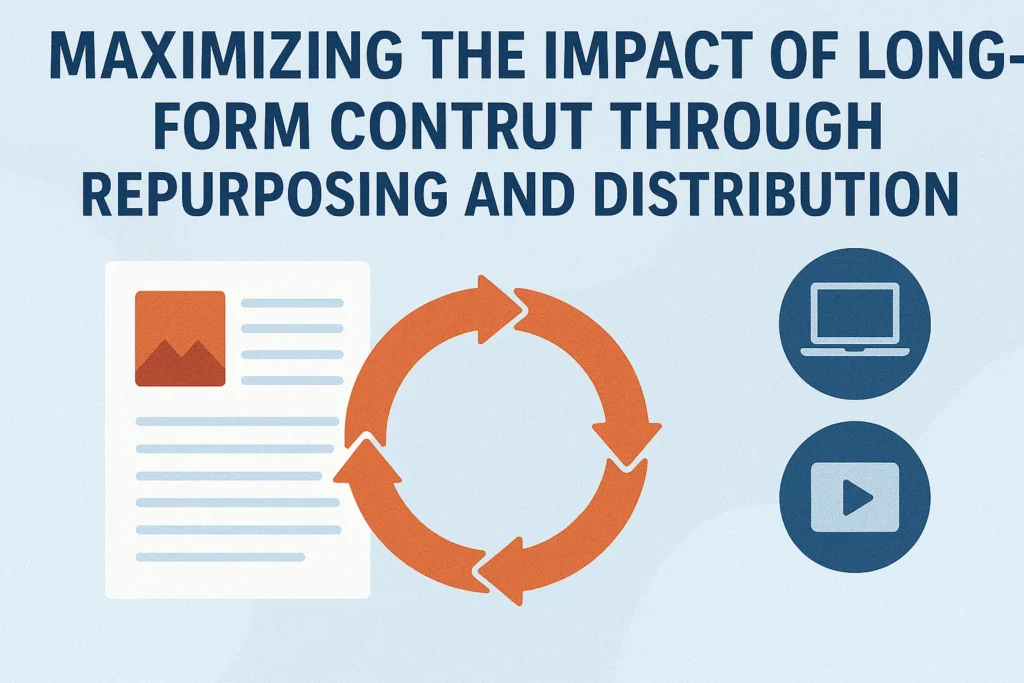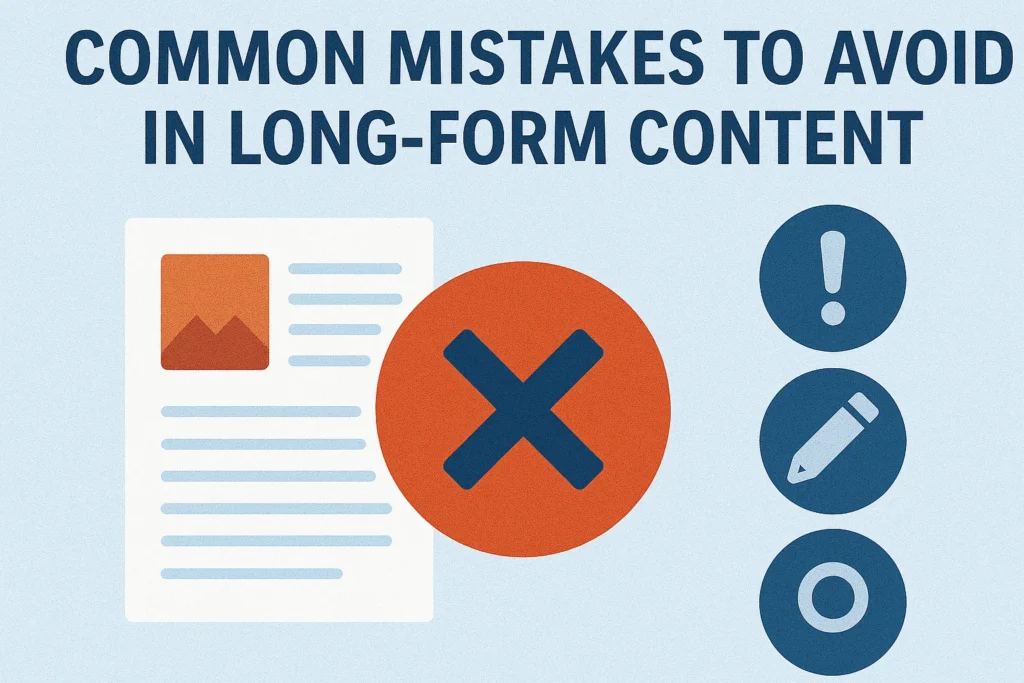Are you looking for ways to stop losing visitors before they even see your content?
Our team here at AccuvantLabs has worked with dozens of Brisbane businesses struggling with slow load times and dropping rankings. We’ve witnessed how a few simple speed fixes can double your organic traffic in just months.
In this guide, we’ll cover:
- What website speed SEO is and why Google cares about it
- How to diagnose what’s slowing your site down
- Which speed metrics are most important for rankings
- The fastest fixes that deliver actual results
Ready to speed up your site and climb the search rankings? Let’s begin.
What Is Website Speed SEO?

Website speed SEO is all about making your site a fast-loading website so you can rank higher on Google. Many companies don’t realise how a slow website pushes users away. When someone clicks on your site from search results, they expect it to load within seconds. Otherwise, they simply leave your page.
We’ll now explain how speed plays a huge role in SEO and how it came to be.
Site Speed as a Google Ranking Factor
Google made site speed a ranking factor in 2010 for desktop searches. Back then, most people thought it was just a minor tweak. But Google was serious about prioritising user experience.
Fast forward to 2018, and they rolled out the “Speed Update” specifically for mobile searches. This update was a big thing because mobile traffic had already overtaken desktop by that point. Sites that loaded slowly on mobile started losing rankings, even if their content was perfect.
Since then, fast-loading web pages have consistently ranked higher than their slower competitors. It’s not the only factor (content quality is still the most important), but speed gives you a real edge when the rest of the factors are equal.
Core Web Vitals and What They Measure
Instead of just looking at “how fast does this site load”, Google now tracks three specific metrics called Core Web Vitals. They paint a clearer picture of what users truly experience when they come to your website.
Here are the three Core Web Vitals metrics:
- Largest Contentful Paint (LCP): It measures how fast your main content shows up on the page. We’re talking about your hero image, main headline, or whatever grabs attention first. Google wants this done in under 2.5 seconds. Otherwise, users get impatient and bounce.
- Interaction to Next Paint (INP): When someone clicks a button or taps your screen, INP measures how long it takes until something actually happens. You want that delay under 200 milliseconds, because if it’s any longer, your site will start to feel sluggish.
- Cumulative Layout Shift (CLS): Have you ever experienced how, when you try to click something, the whole page suddenly shifts? CLS measures those annoying layout jumps. It usually happens when an ad or image loads late and shoves everything down the screen.
These three metrics work together to show Google whether your site provides a smooth, frustration-free experience. You’re likely to reach higher in search engine rankings if you pass all these metrics.
How Do You Diagnose What’s Slowing Your Website Down?

Most website owners try to fix their speed before understanding the problem. But the best approach is to run proper diagnostics first and find out where the issue is by running speed tests and finding the sources of speed drains.
Let’s go through how to perform these tests and figure out the actual issues.
Running Speed Tests to Identify Real Bottlenecks
Free speed testing tools can pinpoint exactly what’s dragging your site down. For example, Google PageSpeed Insights tests both your mobile and desktop performance, and breaks down your Core Web Vitals (we’ve mentioned earlier).
Another similar testing tool is GTmetrix, which goes further with its waterfall chart. It shows every file that loads and how long each takes.
When one file takes 3 seconds while others load in milliseconds, you’ve found your problem.
Signs Your Web Hosting Is the Problem
Did you know that your web hosting provider can affect how quickly your server responds to requests? There’s a metric called Time to First Byte (TTFB) that helps you identify whether your hosting is contributing to slow performance.
As a rule of thumb, a TTFB under 200-300 milliseconds is considered excellent. Anything under 500 ms is generally good, while times above 600-800 ms often indicate server- or hosting-related issues.
If your TTFB regularly goes beyond 800 ms, it’s a strong sign that your hosting or server configuration may be slowing your site down.
Finding Plugins and Scripts That Drain Speed
According to SpeedCurve on their page “Third-Party Web Performance”, a synthetic test showed that with all third-party scripts enabled, a page’s LCP took 26.82 seconds. However, with all third-party scripts disabled, it dropped to under 1 second.
Analytics tools, chat widgets, social sharing buttons, and advertising scripts all add weight to your pages. We’ve seen sites running 15 plugins where only 5 were necessary. The result is usually a slow-loading website and poor rankings.
But how do you find the scripts that are eating up your page speed? Well, Chrome DevTools can show you which ones they are. Press F12 in Chrome, go to Performance, and run a test to see which resources are taking the longest.
Pro tip: Run a local Lighthouse test inside Chrome because it gives deeper diagnostic detail than most online testing tools.
How Do You Measure Website Speed for SEO?

Once you’ve identified where your bottlenecks are, you need to monitor your website performance consistently. The goal here is to track improvements and catch new issues before they hurt your rankings.
Keep reading to find out how you can do it.
Testing Tools That Reveal Performance Issues
Different tools give you different perspectives on your site’s performance.
We’ll start with Google PageSpeed Insights (hello again!). It updates your site performance data every 28 days using real user data from Chrome browsers. This means the scores reflect what actual visitors experience. The mobile score is more important here since Google indexes mobile-first.
Next up, GTmetrix allows you to test your webpage from different server locations and simulates various connection speeds. Want to see how your site performs for someone on 3G in rural Queensland? This tool can show you that.
You can also schedule regular tests and get email alerts from GTmetrix when performance drops.
WebPageTest is the third tool on our list that offers the most detailed analysis, if you’re willing to dig into the technical side. It shows you filmstrip views of how your page renders frame by frame, so you can see precisely when your content becomes visible to users.
Important Speed Metrics for Rankings
We highly recommend focusing your efforts on the metrics Google uses to judge your website loading speed. We’re talking about Core Web Vitals metrics and page load speed (yes, we’re repeating them here, and it shows how important they are).
For starters, your LCP target should be under 2.5 seconds. Between 2.5 and 4 seconds is average, and anything over 4 seconds needs urgent attention.
Most sites struggle with LCP because their hero images are massive or the server response is slow.
And your INP should stay under 200 milliseconds. This metric replaced First Input Delay (FID) in 2024 and measures how quickly your site responds when users interact with it (hint: heavy JavaScript often causes poor INP scores).
Last but not least, page load time under 3 seconds keeps mobile visitors from bouncing. Desktop users are slightly more patient, but mobile users expect near-instant loading.
If you’re losing traffic despite ranking well, slow load times on mobile are often the culprit.
What Are the Fastest Ways to Improve Website Speed?

The fastest ways to improve website speed involve compressing your images before uploading them and enabling browser caching. You must also use a Content Delivery Network (CDN), minify your CSS, and implement lazy loading for images.
Follow this list to improve your site speed:
- Compress Images Before Uploading: Tools like TinyPNG or ShortPixel can reduce image file sizes by up to 90% without any visible quality loss. This way, a 2 MB image becomes 200 KB in seconds, which significantly reduces your page weight.
- Use WebP Image Format: WebP is a modern format that loads 25-35% faster than JPEG or PNG files. Most browsers support it now, and WordPress can convert your images automatically if your theme and hosting allow it.
- Resize Images to Display Size: You shouldn’t upload 3000 px images that only display at 800 px on your site. Browsers have to download the full file regardless of display size, which wastes bandwidth and slows everything down.
- Enable Browser Caching for Static Files: Browser caching stores your static assets, like CSS and JavaScript files (images too), on visitors’ devices after their first visit. Returning users can then load these files from local storage instead of downloading them again.
- Use a Content Delivery Network (CDN): A CDN delivers your content from servers that are nearest to each user’s physical location. Based on our experience with Brisbane businesses targeting Asian markets, a Sydney-hosted site can serve Singapore visitors from Singapore servers, at a whopping 40-60% reduced latency.
- Minify CSS Files: Minification removes spaces, line breaks, and comments from your code that humans need but computers don’t. Typical CSS files shrink 20-30% through minification, and WordPress plugins like WP Rocket or Autoptimize handle this automatically.
- Combine Multiple JavaScript Files: Every separate JavaScript file on your page requires a new server request. When you combine 10 JavaScript files into one single file, it reduces those requests from 10 down to 1, and it speeds things up considerably.
- Remove Unused CSS and JavaScript: Many WordPress themes load code for features you’re not even using on your site. Tools like PurgeCSS can identify this dead weight and remove it, which sometimes cuts your CSS file size in half.
- Implement Lazy Loading for Images: You probably didn’t know this, but lazy loading prevents images from downloading until users actually scroll down to see them. Why force visitors to load 20 images when they might only view the first 3 before leaving your page?
- Use Native Lazy Loading Support: Most modern WordPress themes now include lazy loading functionality by default. If yours doesn’t, you can add plugins like Lazy Load by WP Rocket. You may also simply add the HTML loading=”lazy” attribute to your image tags if you’re comfortable editing code.
Implement these changes today and watch your website speed anxiety melt away.
Take Control of Your Website Speed Today
Website speed determines if you’ll rank on page one or get buried on page three. Every second you shave off your load time improves your rankings, keeps visitors engaged, and increases conversions.
Need help improving your website speed and SEO performance? Contact our Brisbane team today for a free site audit. Slow sites will wait, but your users won’t.






